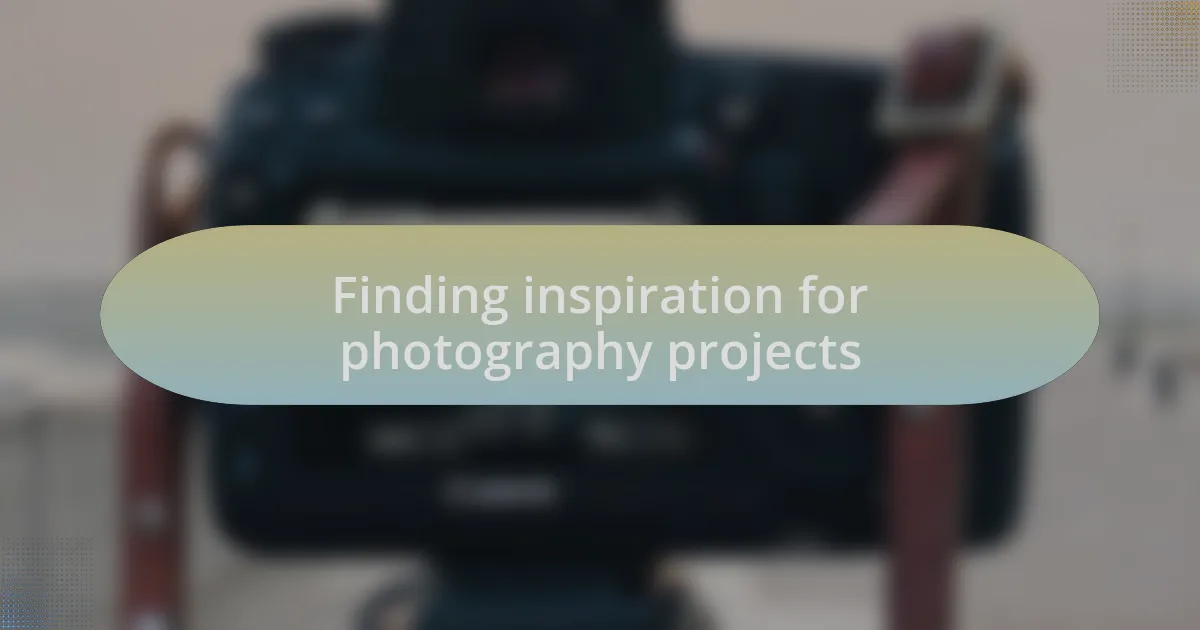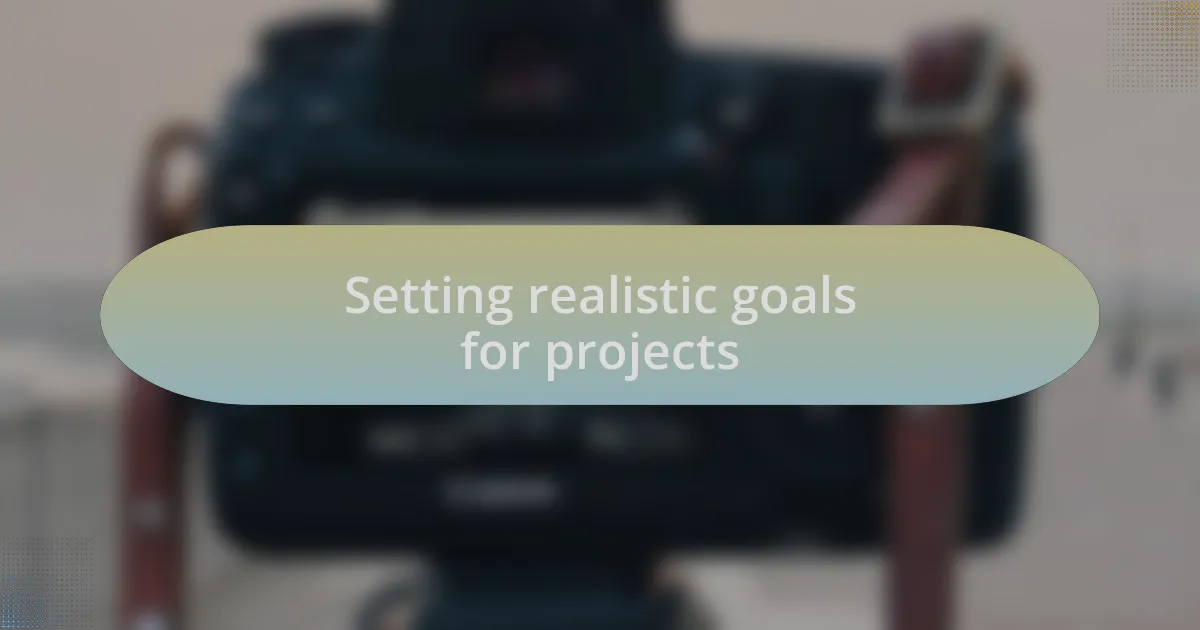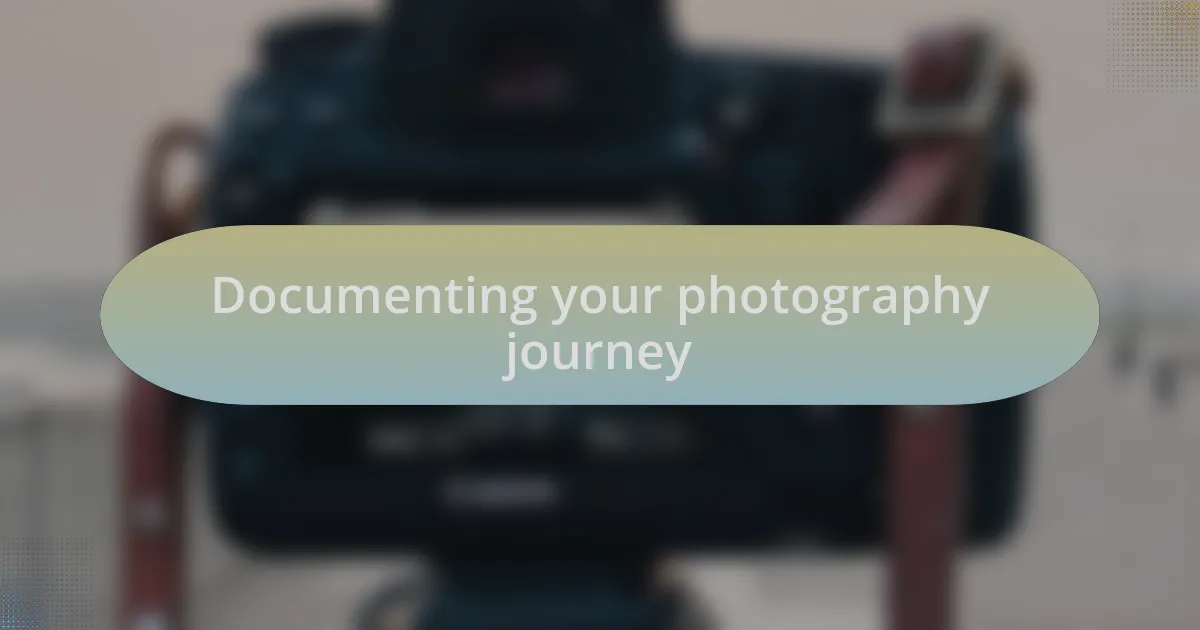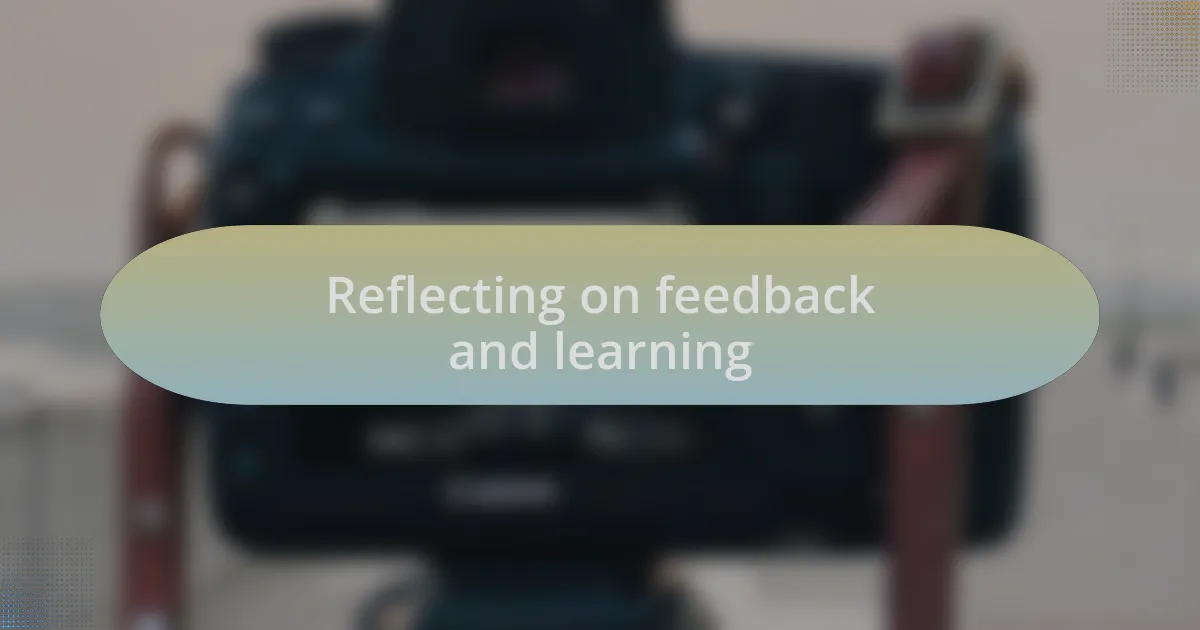Key takeaways:
- Personal projects in photography enhance creativity, challenge technical skills, and provide emotional outlets.
- Finding inspiration can come from daily surroundings, themes of personal interest, and collaboration with other artists.
- Setting realistic goals by being specific, aligning with resources, and establishing time constraints can boost creativity and progress.
- Documenting the photography journey through diaries, social media, and physical albums helps track growth and connect with the audience.

Understanding personal projects in photography
Personal projects in photography act like a playground for creativity. I remember the first time I dedicated a month to capturing portraits of strangers in my neighborhood. Each encounter was a new story, and in that spontaneity, I found my voice behind the camera.
What often surprises me is how personal projects can challenge technical skills. For instance, when I decided to shoot a series of black-and-white landscapes, I was pushed to learn about contrast and light in a way I hadn’t before. Have you ever felt that urge to push your boundaries? I find it’s where real growth happens.
Additionally, these projects provide an emotional outlet. During a particularly tough time, I created a photo journal to document my feelings through imagery. Looking back, that creative process helped me heal and connect deeply with my work. Isn’t it fascinating how art can speak when words fail?

Finding inspiration for photography projects
One of the most rewarding ways I find inspiration for photography projects is through the world around me. I remember a time when I took an evening walk in a local park, noticing the interplay of light and shadows as the sun dipped below the horizon. Suddenly, everything transformed into potential subjects—children at play, dogs frolicking, and the quiet rustle of leaves. Have you ever looked at your daily surroundings and felt a spark of creativity? It’s amazing how a simple stroll can ignite new project ideas.
Another source of inspiration can come from themes or stories I’m passionate about. I once took on a project centered around the concept of “home,” trying to capture what that meant to different people in my community. I interviewed families, photographed their spaces, and as I engaged with their lives, I was infused with their stories. Sometimes, uncovering the deeper narrative within a familiar topic can lead to profound insights in our work. What emotional connections can your chosen theme uncover?
Lastly, I find great inspiration in collaborating with other artists. I once teamed up with a painter for a mixed-media project where we combined visual storytelling through both our crafts. Not only did I discover new technical skills, but I also gained unique perspectives on creativity. Have you ever considered reaching out to someone in a different medium? I believe that these collaborative efforts can create something truly special and invigorate our photographic journeys.

Setting realistic goals for projects
When it comes to setting realistic goals for my photography projects, I’ve learned that specificity is essential. I once decided to embark on a 30-day photo challenge, aiming to capture one thematic image each day. Initially, I overwhelmed myself with grand ideas, but once I broke it down into manageable daily tasks—like focusing on textures or shadows—I found my creativity flourished. Have you ever set yourself ambitious goals only to feel stifled? Focusing on smaller, achievable objectives can build confidence and stimulate progress.
Another important aspect is aligning goals with my skills and resources. Early in my photography journey, I aimed to produce a gallery-worthy series without considering my current technical abilities or the equipment I had. I quickly realized that instead, I could target a project with the camera I owned and practice techniques I was less familiar with, like long exposure shots at night. How can a more personal evaluation of your resources refine your project goals?
Lastly, I believe in setting time-bound goals. I once committed to completing a project on local architecture within a month. This timeframe encouraged me to strategize my outings and conduct research effectively. Have you thought about how time constraints can propel your projects forward? Creating a sense of urgency can often ignite motivation and keep you on track, transforming vague intentions into concrete actions.

Documenting your photography journey
Documenting my photography journey has become an invaluable practice. I often find myself reflecting on the subtle changes in my style and perspective over time. For instance, I started a visual diary where I could not only share my best shots but also include notes and thoughts about each photograph. This reflection deepens my appreciation for the evolution of my work. Have you ever looked back at your past images and felt a rush of nostalgia mixed with pride?
When I began capturing images, I started posting my work online, specifically using social media platforms to document not just the finished product but the process behind it. Sharing behind-the-scenes moments, like the frenzy of adjusting settings or waiting for the perfect light, made me feel connected to my audience. I often found that the candid stories attracted more engagement than the polished photos. Isn’t it fascinating how the journey can resonate more than the destination?
As I continue to document each phase of my journey, I appreciate the opportunity to track my growth. Once, I compiled my work into a physical album, which became a tangible reminder of my progress and the lessons learned along the way. That experience taught me that the act of documenting isn’t merely about capturing images; it’s about storytelling. How do you share the narratives that shape your artistry?

Reflecting on feedback and learning
Reflecting on feedback has been a game changer in my photography. There was a time when I would brush aside criticism, thinking I knew best. However, after receiving constructive feedback from trusted peers, I decided to embrace their viewpoints. An early comment about my lighting technique struck me deeply; it pushed me to experiment and ultimately transformed my approach to capturing shadows and highlights. Have you ever had feedback that sparked a new idea or direction in your work?
I often revisit the critiques I receive, and it’s fascinating to see how my understanding has shifted. For instance, a fellow photographer suggested I pay closer attention to composition. I took that to heart and began studying the rule of thirds, leading me to create more dynamic images. Sometimes, I wonder how different my portfolio would look if I hadn’t taken that advice seriously. Does feedback influence your creative path in unexpected ways?
Maintaining a feedback log has also become a personal ritual for me. I note the insights I receive and my reflections on them, treating it as a way to track my evolution. This practice not only reinforces the lessons learned but also reminds me that growth is often non-linear. I can look back and see how something that felt discouraging at the time became a stepping stone in my journey. Have you considered keeping a similar record to document your artistic progression?